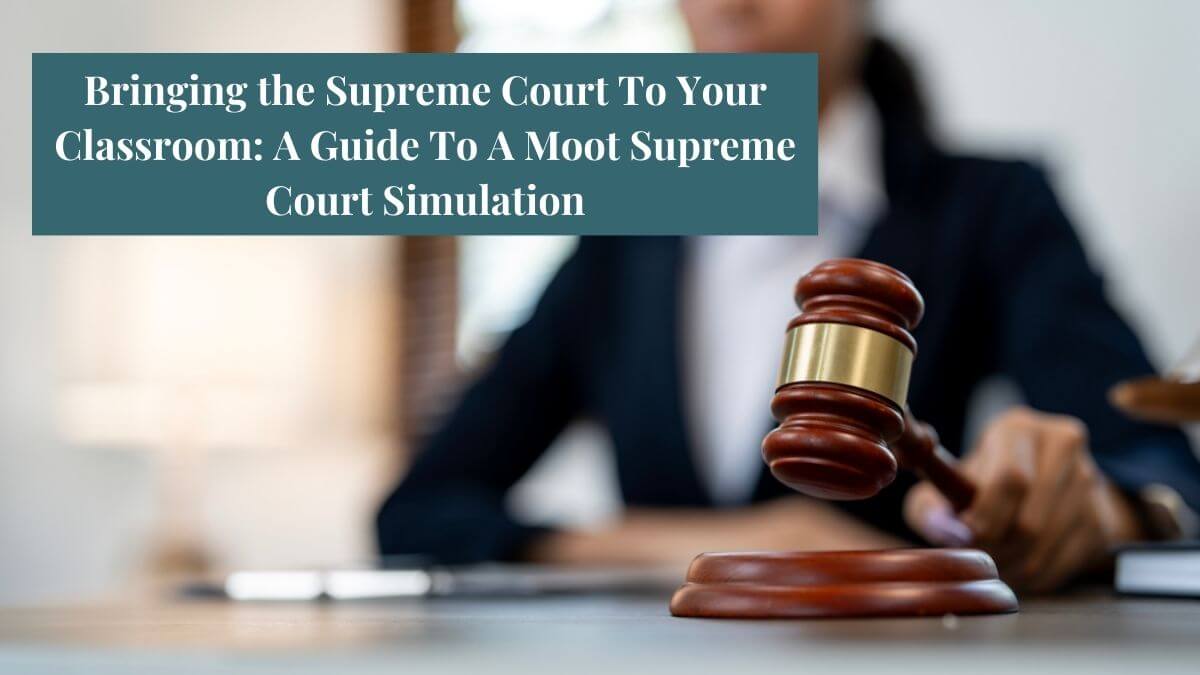Are you a high school government teacher who wants to incorporate more projects and activities into your class? If so, you’ve come to the right place! In this blog, I’ll show you how to use a Mock Supreme Court Simulation in your classroom. Continue reading to see how you can implement a Mock Supreme Court trial in your classroom! (If you’re interested, you can also purchase my ready-made Mock Supreme Court Moot Court Simulation! It includes a suggested teacher guide, moot court procedures, and ready-to-use student handouts/graphic organizers.)
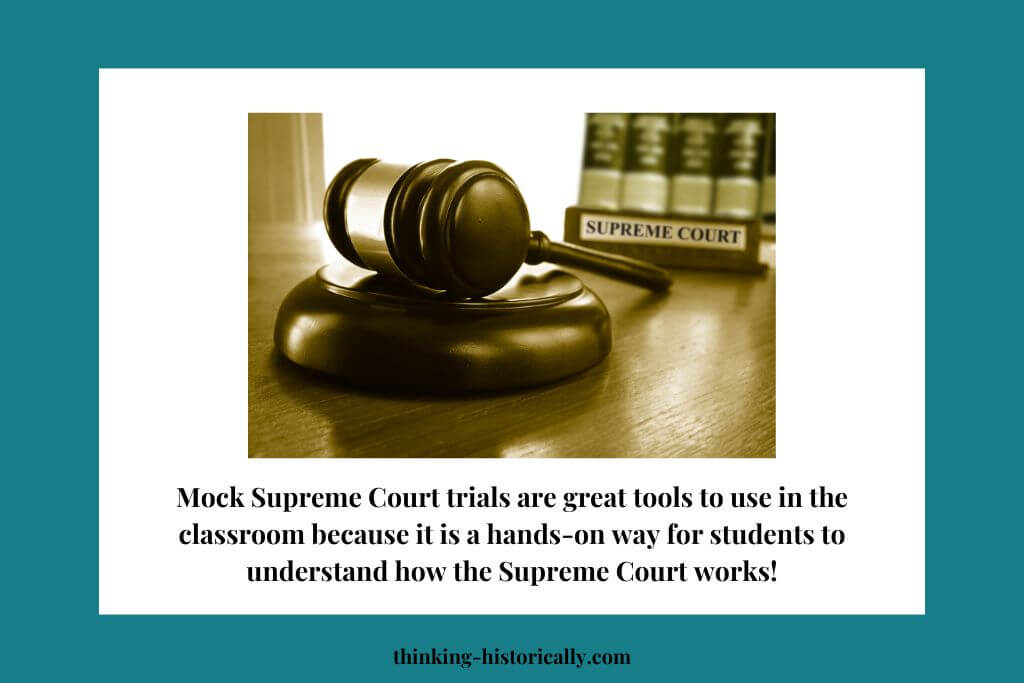
What is a moot Supreme Court Trial?
A Supreme Court trial occurs when the Supreme Court reviews decisions made by lower courts. In a moot Supreme Court trial, students take on the roles of Supreme Court justices, petitioners, and respondents. Petitioners and respondents create arguments to support their sides. Supreme Court Justices ask petitioners and respondents questions and then make a decision based on the oral arguments that were presented.
Mock Supreme Court trials are great tools to use in the classroom because it is a hands-on way for students to understand how the Supreme Court works, it forces students to collaborate and work together in teams, and students develop their analysis skills as they research precedents and create arguments to support their sides!
Before starting the simulation in your class, it is best to assign or have students sign up for the roles of Supreme Court Justices, petitions, or respondents. The petitioners are the attorneys who want the Supreme Court to review the case. The respondents are the attorneys who do not want the Supreme Court to review the case and AGREE with the lower court’s decision.
So without further ado, here’s how to implement a moot court in your class!
Step-by-Step Implementation/Prepwork for Moot Court
On the first day of this simulation, split students up based on their roles (Supreme Court Justice, petitioner, respondent). Then have them read the case they will be working on. After reading their assigned case, have students complete a “Case Study.” For the case study, students must identify the following:
- Facts of a the case
- The constitutional issues involved
- The amendment related to the case
- Precedents related to the case
Below is a sample of a case study organizer you can create for your students. The case study may take students 1-2 days of in class-work time. If you are running short on time, you can have students finish the case studies for homework.
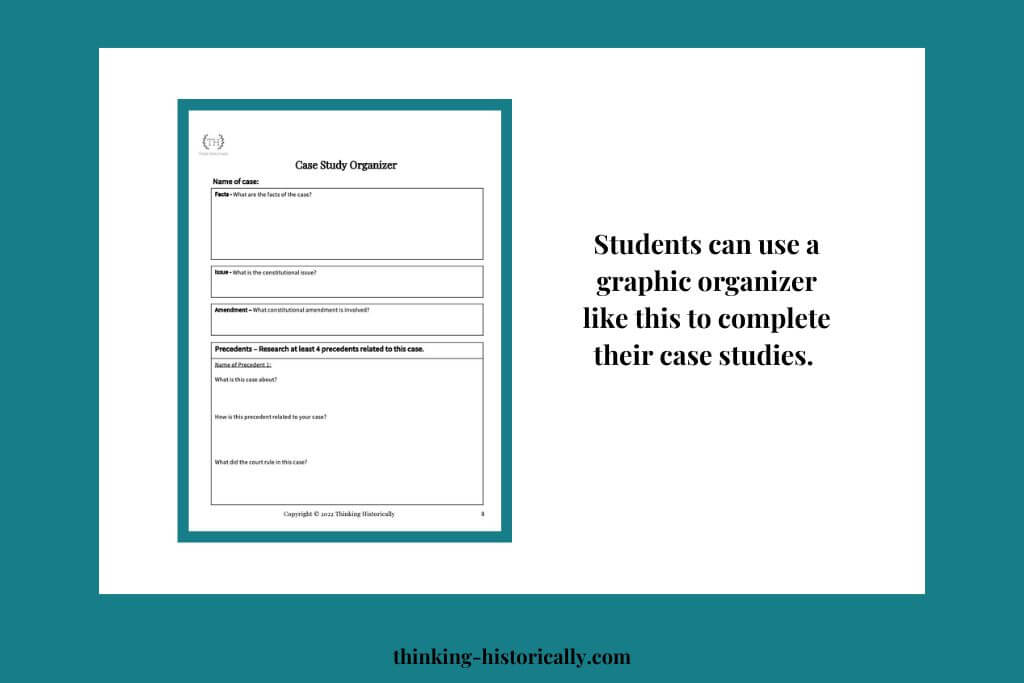
Next, have students work on their oral arguments. Petitioners and respondents must create arguments that will support their side. Supreme Court justices will create arguments that they anticipate or think respondents and petitioners will try to argue. Again, oral arguments may take 1-2 days of in-class work time.
Then have respondents and petitioners work on their opening statements. Opening statements include a brief summary of the facts of the case, precedents that support their side, and a very brief summary (without going into too much detail) of the arguments they will present to the justices.
Supreme Court justices will also work on their opening statements. For their opening statements, they will include a brief summary of the case and questions they’ve created to ask petitioners and respondents. Below is an example of an opening statement organizer that I used for my class. Once students finalize their opening statements, it is time to hold your Moot Supreme Court trial! You may decide to give students one more day to practice their opening statement, oral arguments, and rebuttals!
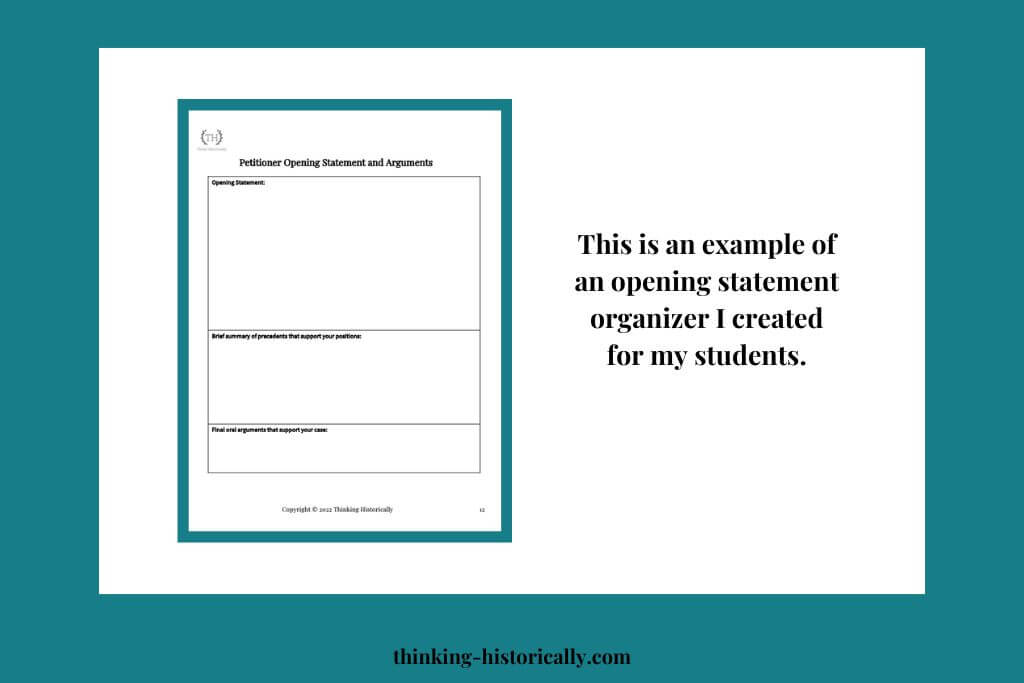
Procedures for day of moot Supreme Court Trial
Below are the procedures for a moot Supreme Court trial. The times in parenthesis are the times I used for my class, but feel free to change the times to fit your classroom needs!
- Opening Statement – Respondent (5 minutes)
- Opening Statement – Petitioner (5 minutes)
- Oral Arguments – Respondent (5-10 minutes)
- Oral Arguments – Petitioner (5-10 minutes)
- Judge Questions either side (10-15 minutes)
- Rebuttal – Respondent (5 minutes)
- Rebuttal – Petitioner (5 minutes)
- Judges Deliberation (5 – 10 minutes)
- Judges Present Decision (3 -5 minutes)
While the judges deliberate, you can have respondents and petitioners complete a reflection about what they learned from participating in a moot Supreme Court trial!
How to choose a case
The great thing about mock Supreme Court trials is that you can make up a case or use an actual Supreme Court case. Making up a court case takes a lot of time but if you decide to make up a case, you can tailor it to fit what your students are currently learning!
If you want to use an actual Supreme Court case you can find one based on which amendments your students have already learned and studied. For my class, we had already covered the first and the fourth amendment so I chose Supreme Court cases that dealt with those amendments. The Supreme Court cases I used for my class were Elonis v. United States and Rodriguez v. United States.
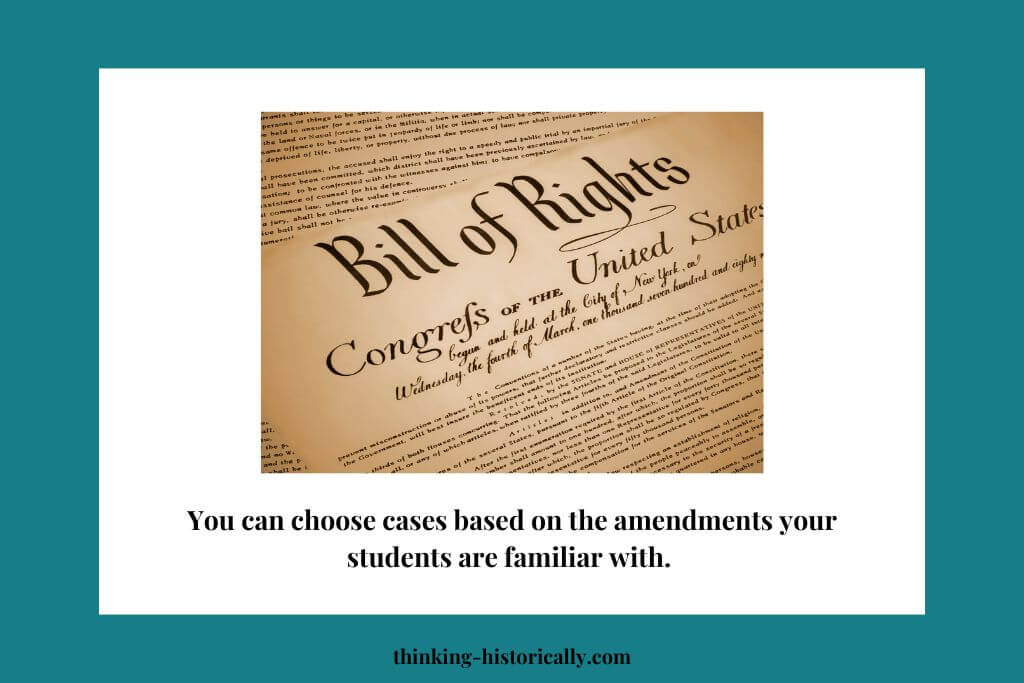
Conclusion
Incorporating a mock Supreme Court trial is a great way to bring hands-on learning into your classroom! Your students will develop their critical thinking and document analysis skills and practice public speaking! Your students will also understand the role of the Supreme Court. If you’re interested, check out my Mock Supreme Court Moot Court Simulation! It includes ready-made student handouts, rubrics, checklists, facts about the Elonis v. United States and Rodriguez v. United States, and a suggested teaching guide.
Happy teaching!
